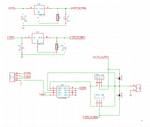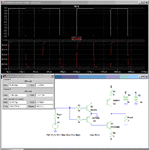slanina
Junior Member level 2

I am experimenting with electro magnets and I am trying to feed AC 1A current into a small electromagnet.
Due to the magnet size (small) and current of 1A wire would be about ~1mm in diameter which would make its resistance negliglible since its lenght won't be much (~10cm/4in in total).
What would be the best way to amplify a 5kHz - 20kHz AC sine wave (from DDS, or sine-wave oscillator or lab function generator) to provide constant current of 1A on such a small load. As for Vpp, it would be nice if it can be adjustable, but I could live with ~5 Vpp.
I have looked at various circuits and I can find constant current sources circuits. But I need to amplify input signal *and* provide constant current. I guess there should also be a diode to prevent back EMF.
Due to the magnet size (small) and current of 1A wire would be about ~1mm in diameter which would make its resistance negliglible since its lenght won't be much (~10cm/4in in total).
What would be the best way to amplify a 5kHz - 20kHz AC sine wave (from DDS, or sine-wave oscillator or lab function generator) to provide constant current of 1A on such a small load. As for Vpp, it would be nice if it can be adjustable, but I could live with ~5 Vpp.
I have looked at various circuits and I can find constant current sources circuits. But I need to amplify input signal *and* provide constant current. I guess there should also be a diode to prevent back EMF.






